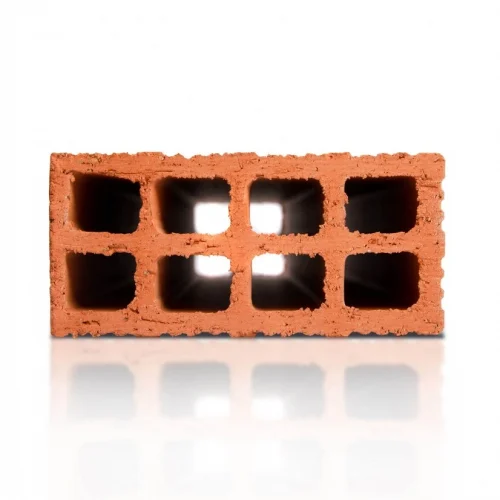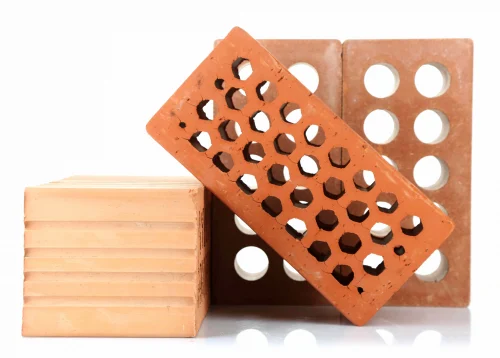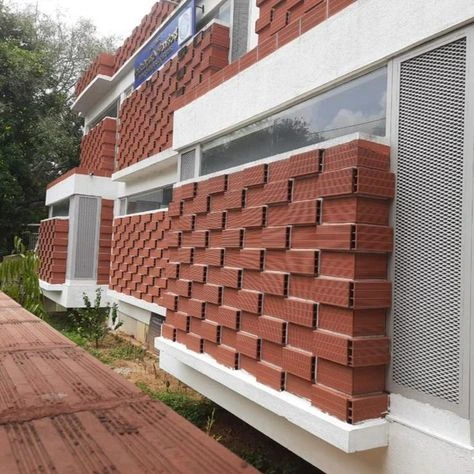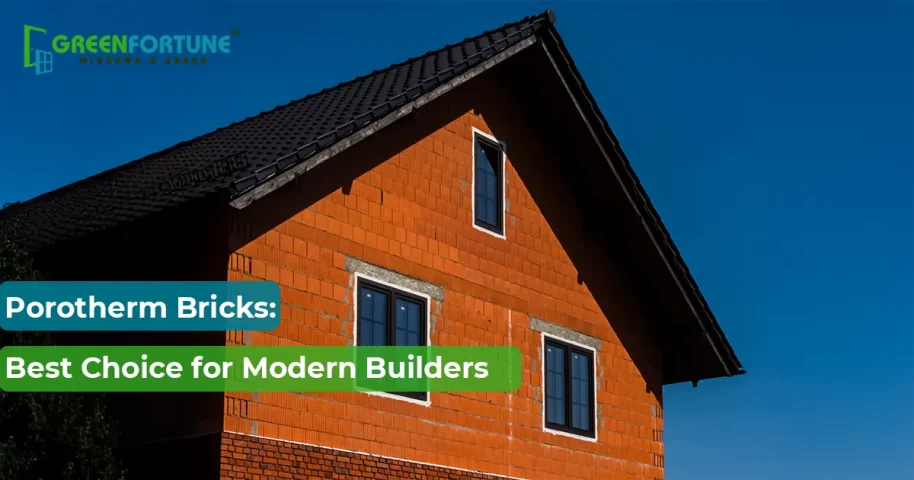
Ingress And Egress Explained: What They Are & Why They Matter
April 19, 2025
Which Is the Best Cement for House Construction in India? A Complete Guide for Homeowners
April 19, 2025If you’re planning to build a new home, renovate an old one, or even just exploring better building materials, you may have come across the term Porotherm bricks. At first glance, they may look like regular bricks, but they are very different. These bricks are specially designed to offer better insulation, strength, and speed in construction. They’re not a new invention, but they are becoming more popular among architects, engineers, and homeowners who want durable, eco-friendly options.
In this blog, we’ll walk you through what Porotherm bricks are, how they’re different from regular bricks, their benefits, how they look, their cost, and where they work best.

What Are Porotherm Bricks?
Porotherm bricks are clay-based bricks known for their strength and insulation. They differ from standard red bricks or concrete blocks due to their unique honeycomb structure with small holes or perforations inside them. They are engineered to support fast construction, better energy efficiency, and strong load-bearing capabilities.
How Porotherm Bricks Are Different from Regular Bricks

Porotherm bricks are quite different from the traditional red bricks. Here are a few important differences:
- Weight: Porotherm bricks are much lighter than regular bricks. This helps reduce the overall weight of the building and makes handling easier during construction.
- Size: They are larger in size, so you need fewer bricks to build a wall. This saves time and materials.
- Thermal Insulation: The air pockets inside the bricks provide insulation and keep the house cooler in summer and warmer in winter.
- Sound Insulation: These bricks can also reduce outside noise, which is helpful if your home is in a noisy area.
- Water Resistance: Porotherm bricks absorb less water than normal bricks, which helps avoid dampness and improves the life of the building.
Benefits of Using Porotherm Bricks in Your Home
Using Porotherm bricks has several practical benefits that affect your comfort, budget, and long-term maintenance needs.
- Energy Efficiency: Structures built with these bricks stay cooler in hot months and warmer in cold months. This reduces the need for heaters and air conditioning, which helps lower electricity bills.
- Strong and Durable: Even though they are lighter, Porotherm bricks are very strong. They can handle the load of buildings and last a long time, even in harsh weather.
- Eco-Friendly: As they are made from natural materials, they are less energy-intensive to produce. They also help save energy after the home is built by keeping indoor temperatures stable.
- Faster Construction: Because Porotherm bricks are bigger and lighter, walls can be constructed faster.
- Low Maintenance: Their resistance to water and pests means fewer repairs over time. This is especially useful in areas with a lot of rain or termites.
Porotherm Bricks Texture and Visual Appeal
If you are new to Porotherm bricks, you would also want to know about Porotherm bricks texture and how they look. In terms of appearance, they have a natural clay color and a slightly rough surface. Some versions may have a smoother finish depending on the type you choose.
These bricks give a raw and earthy look, which is quite popular in modern architecture. You can also keep them exposed for an industrial or rustic style.
Porotherm Bricks House Design Ideas

Porotherm bricks are very practical and they also offer flexibility when it comes to designing your home. You can use them in exterior walls, garden walls, and even indoor spaces where you want a textured finish. Here are a few ideas:
- Modern Minimalist Homes: Use exposed Porotherm bricks for feature walls and pair them with glass or metal for a clean look.
- Rustic Style: You can combine them with natural wood and stone to create a warm and earthy space.
- Sustainable Homes: Using Porotherm bricks in their natural color and form make it a part of your design for an eco-conscious layout.
Porotherm Bricks Cost: What You Should Know
The cost of Porotherm bricks can be a little higher than regular red bricks if you look at the price per piece. But there are other factors to decide overall costs:
- Since these bricks are bigger and easier to work with, you’ll need fewer bricks and less labor.
- As they offer natural insulation, you won’t need as many extra materials like thermal plaster or insulation boards.
- Over time, you’ll save money on energy bills because your home will stay temperature maintained without using extra heating or cooling.
However, the final cost will depend on:
- Your location
- The type of Porotherm brick (solid vs. hollow)
- Quantity needed
- Transportation and supplier margins
So when thinking about Porotherm bricks cost, it’s better to look at the full picture and not just the upfront price but also the long-term savings.
Things to Keep in Mind About Porotherm Bricks
While Porotherm bricks come with plenty of advantages, here are a few things to consider:
- Skilled Labor: All masons may not be used to working with these bricks. Make sure your builder has experience or is open to learning the proper methods.
- Proper Handling: They are strong yet their hollow structure requires careful handling during transport and while mounting to avoid breakage.
- Compatibility with Finishes: They work with most types of plaster and paint, but if you’re planning to leave them exposed, make sure your materials match the brick’s surface.
Final Thoughts
Porotherm bricks work great in most situations. Just keep in mind - if you’re set on a very specific exterior finish, you may still need plaster or cladding depending on your design goals. If you’re building from scratch or doing a major renovation, it’s definitely worth discussing Porotherm with your architect or contractor.
And for that sleek, efficient finish, GreenFortune uPVC windows and doors are a great addition—designed to match your style and built to perform.
FAQs
1. Can Porotherm bricks be used in earthquake-prone areas?
Yes, due to their lightweight yet strong build, Porotherm bricks help reduce the dead load of a structure, which is a major factor in earthquake-resistant design. However, always follow local structural guidelines and consult your engineer.
2. How do Porotherm bricks perform in coastal or humid climates?
They’re a solid choice for such areas. Porotherm bricks absorb less moisture compared to conventional bricks, which reduces the risk of dampness and mold. However, proper waterproofing is still recommended for coastal zones.
3. Is it possible to customize the size or shape of Porotherm bricks for a project?
While standard sizes are widely available, some manufacturers offer custom dimensions for large-scale or specialized projects.
4. What kind of foundation works best with Porotherm bricks?
There’s no special foundation needed just for Porotherm bricks. They work well with traditional RCC strip or raft foundations.
5. Do Porotherm bricks require any special storage at the construction site?
Ideally, yes. Because of their perforated structure, they should be stored on flat, dry surfaces and covered with tarpaulin or plastic sheets to avoid soaking in rainwater.

